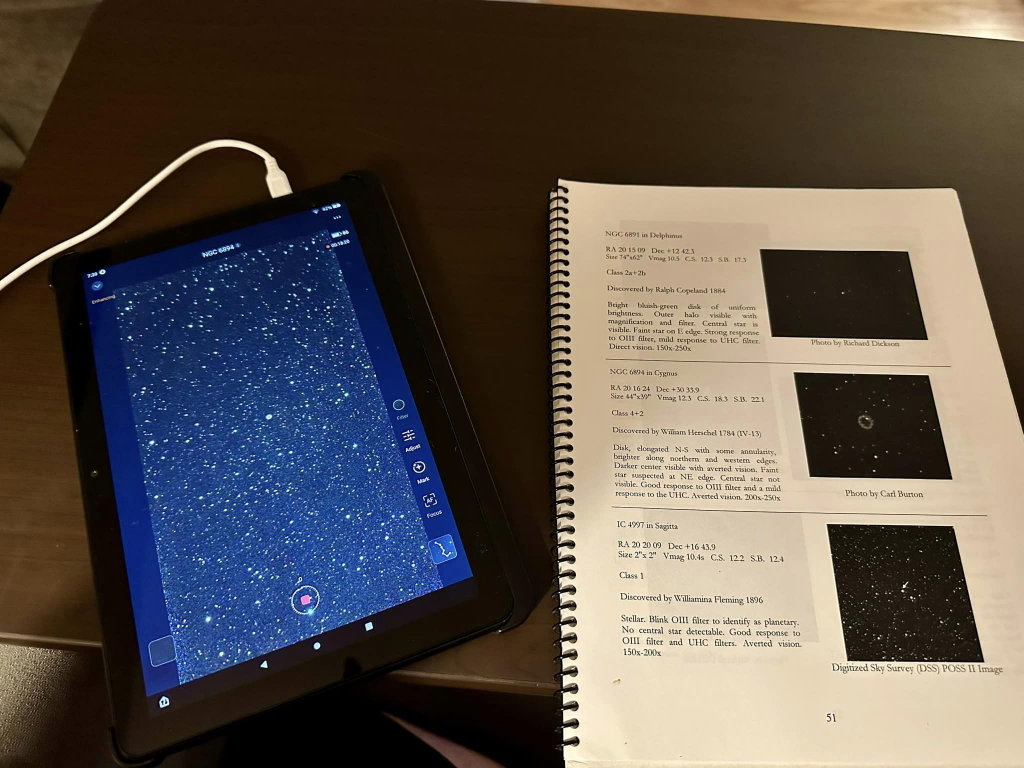Medium sized stars, like our sun, long-lived as they are, don’t explode in a blaze of glory like their more massive-sized cousins when their fuel is used up. They shed their atmospheres out into space forming what is called a Planetary Nebula.
Planetary Nebula is somewhat of a misnomer as they are not planets at all, but appear to be. The term originated because early astronomers described that they looked like the planet Uranus because of their greenish color and appear round. William Herschel descibed them as resembling planets and Darquier de Pellepoix mentions that the Ring Nebula appeared “very dim but perfectly outlined; it is as large as Jupiter and resembles a fading planet”.
Today of course, we know the true nature of this type of nebulae. One to eight solar mass stars end their lives as a planetary nebula. All stars are a balancing act between the crushing force of gravity wanting to collapse the star in on itself, and the nuclear pressure of fusion occuring in their cores pushing back on the gravitational pressure. The gravitational pressure is what causes hydrogen to fuse into helium. As the hydrogen fuel is used up, the core releases less energy to stop the force of gravity. This is when gravity starts taking over, further compressing the core.
At about 100 million Kelvin, the core starts fusing the helium into carbon and oxygen. All the while, the outer atmosphere of the star starts to balloon out to form a red giant. This increases the luminosity over a larger surface area which cools the outer atmosphere. Stars in this phase can lose 50 to 70 percent of its total mass from the stellar winds.
Eventually, most of the atmosphere of the star gets released leaving behind a white dwarf. The ultraviolet radiation from the white dwarf causes the ejected atmosphere to ionize and glow when the temperature of those gases reaches 30,000 Kelvin.
Imaging Planetary Nebula with Smart Telescopes
One of the nice attributes of a Smart Telescope, is that it is easy to set up and do imaging in an efficient manner. Similar to how I like to observe visually, I use one of the excellent observing manuals from the Astronomical League to help find things to image and observe. One of these is the Planetary Nebula Observing Guide.
Many planetary nebula are bright enough, especially using the included light pollution filter in the Seestar, that their light can pierce through the light pollution to get adequate results. Some are larger, more diffuse, and require darker skies. Presented here is a small sample of planetary nebula to chase down and image, even in light polluted skies.
M27 – The Dumbell Nebula

One example of a planetary nebula that is good for light polluted skies is M27 – The Dumbbell Nebula. Located in the constellation of Vulpecula (the Fox), it is readily apparent in binoculars. It is big and bright with a size of 8.0′ by 5.7′ and visual magnitude of +7.3.

Discovered by Charles Messier in 1764, it is considered the first planetary nebula ever discovered. Located about 1200 light years away, the original star shed its atmosphere about 14,000 years ago based on expansion rates determined in 1970 (2.3 arcseconds per century).
The Helix Nebula
Moving on from the first planetary nebula discovered, let us move onto one of the closest planetary nebula, NGC7293, The Helix Nebula in Aquarius.
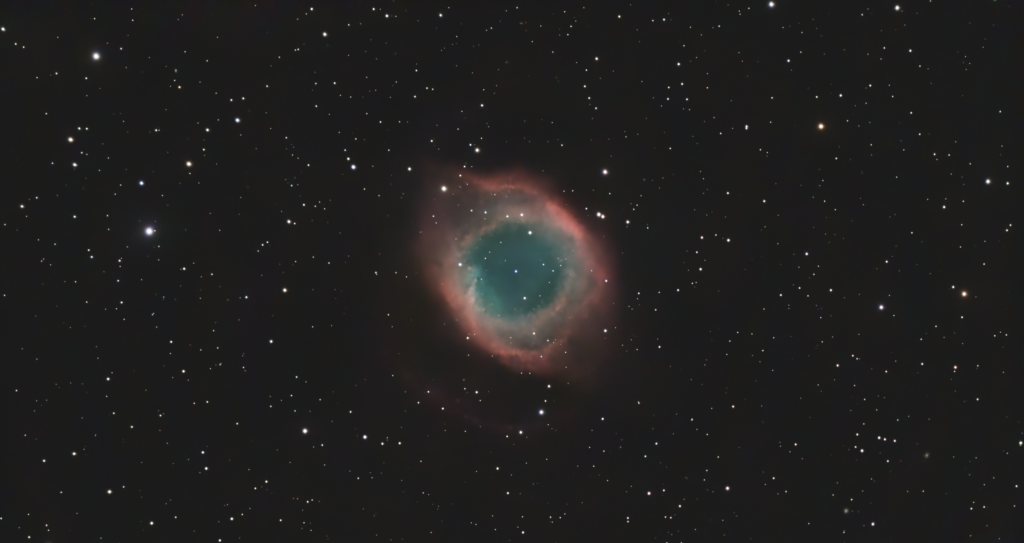
Discovered by Karl Ludwig Harding in 1824, the Helix Nebula is located about 655 light years from Earth. Even though it has a similar magitute of M27 (+7.3), it is more difficult to see in light polluted skies because of its larger size. When an object of similar magnitude is larger, that brightness is spread out over a larger area. You will need darker skies to get the best results.

M57 – The Ring Nebula
One of the most famous planetary nebula is M57, The Ring Nebula. Located about half way between Beta and (β) and Gamma (γ) Lyrae, it is pretty easy to find. It is small (1.5′ by 1′) and relatively bright for its size (+8.8). It makes an ideal candidate to observe both visually and photographically in light polluted skies.
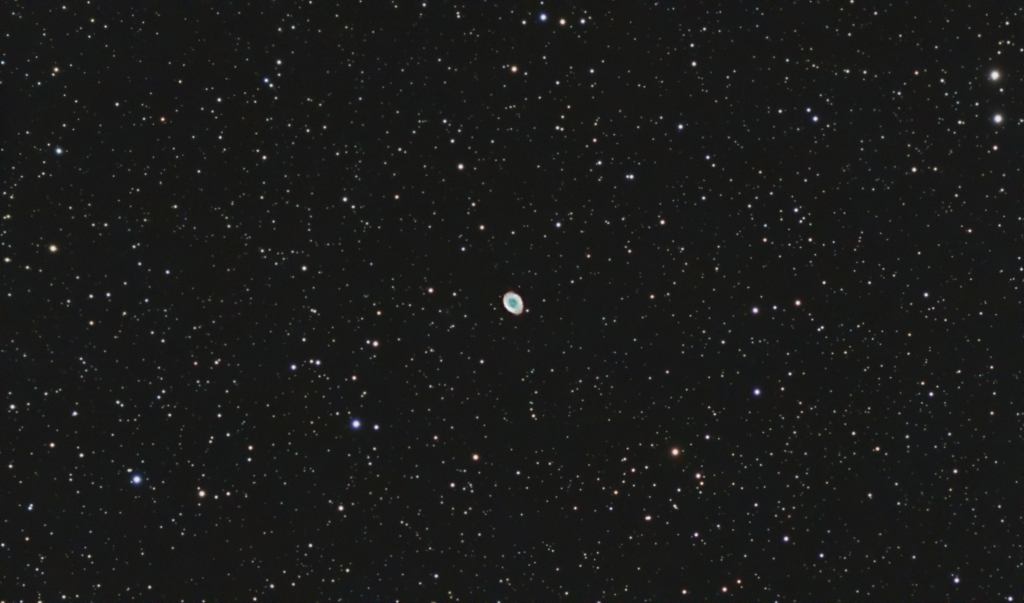

In early 1779, Charles Messier discovered this object while comet hunting. M57 lies about 2,570 light years from Earth. On dark, clear, and steady nights, the central star is visible in moderate sized telescopes with a visual magnitude of +15.75.
NGC7008 – The Fetus Nebula
A fascinating planetary nebula, NGC7008 does look like a fetus. It illustrates that planetary nebula can take on interesting shapes. It is relatively small, only 1.4′ by 1.1′ and not too bright (+12.0). Because of its size, it is easy to capture using your smart telescope with your LP filter although more difficult with a telescope.
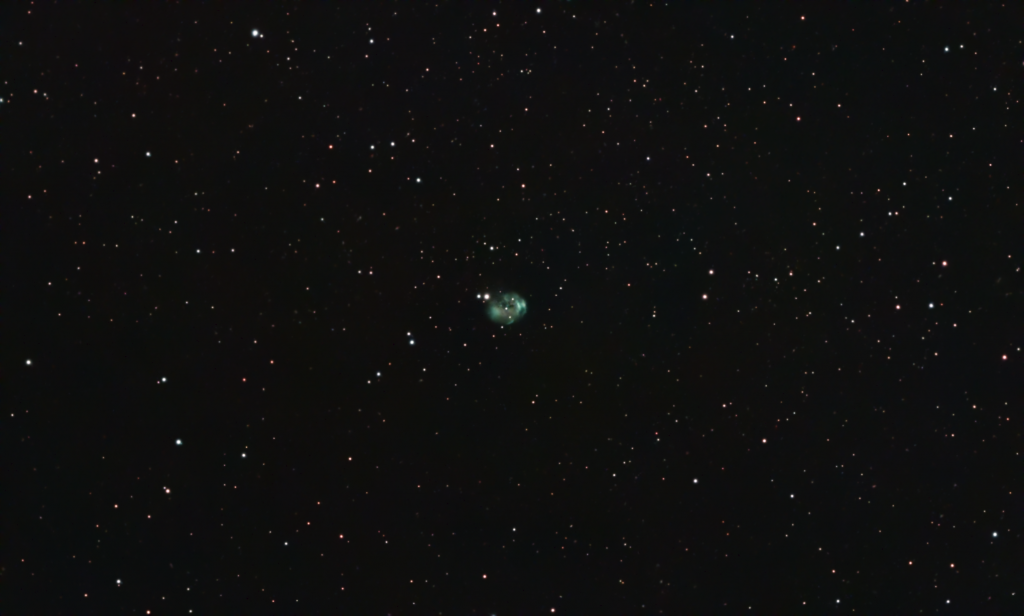
William Herschel discovered this nebula in 1787. It is located in the northern part of Cygnus close to the border of Cepheus and is approximately 2,800 light years away.

Planetary Nebula and an Open Cluster

An interesting object, NGC2438 is a planetary nebula that appears to be in the open cluster of M46. Based on radial velocity studies, the planetary nebula is not associate with the surrounding cluster. It is located about 1,370 light years away (whereas M46 is located 4,920 light years away) so it is a foreground object based on our perspective here on Earth.
Located in the constellation of Puppis, it is quite visible in amateur telescopes, it is a fun object to observe and image.

Hunting Planetary Nebulae
Many planetary nebula are small and require steady skies and larger aperture. However, it is still fun to capture these dying stars using your smart telescope. The ZWO Seestar is an excellent choice for hunting down these nebulae because of the smaller pixel size. You can zoom in to capture a little more detail. In addition, it is fun to collect these fun objects in your astroimaging collection!
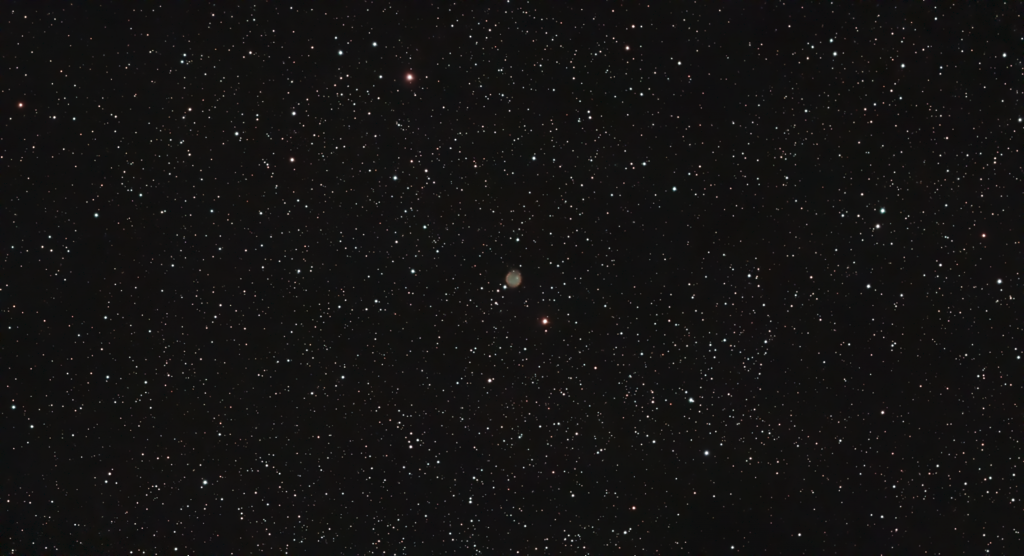

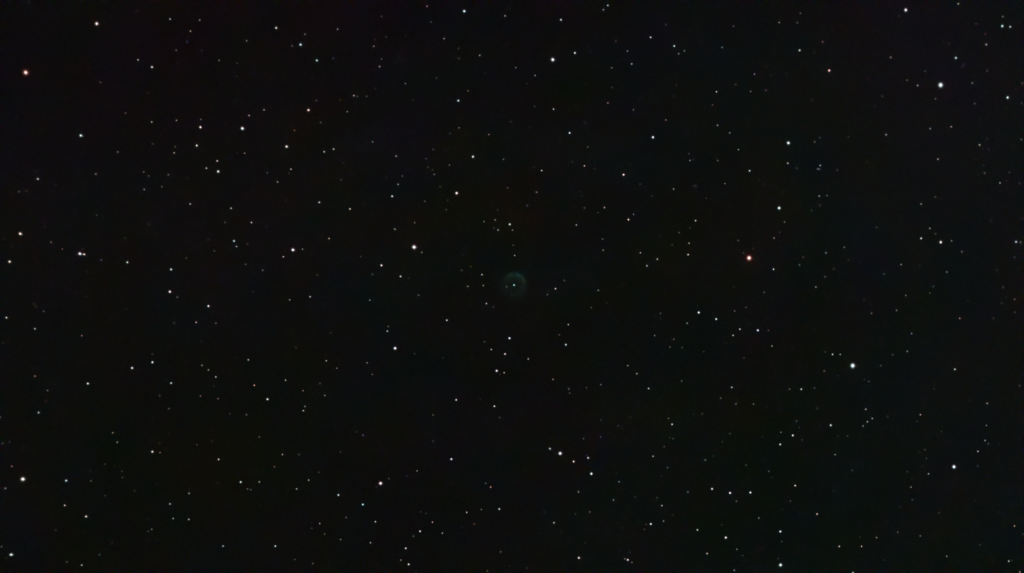
The next time it is clear, and you are looking for something to image, grab a cup of coffee, an AL Planetary Nebula List, and go capture the last vestiges of stars from long ago: The Ghost of Long Dead Stars.
